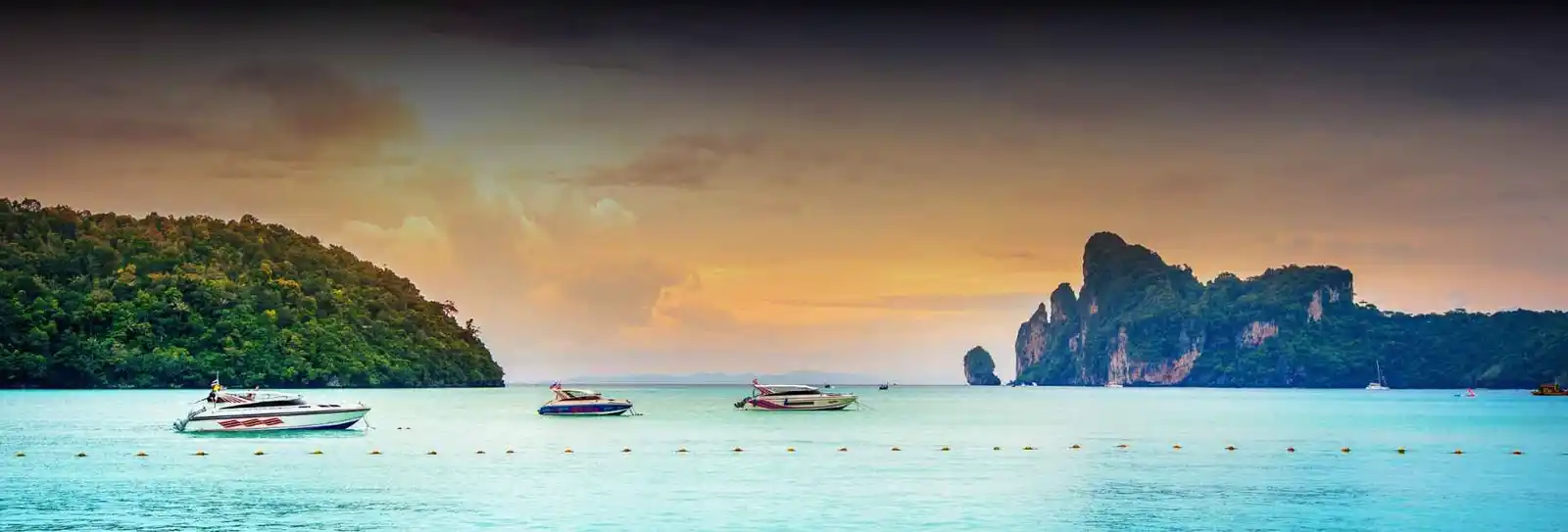
1. Nanda Devi Trek (Uttarakhand)Nanda Devi Trek in Uttarakhand is among India's holiest but closed treks and is graded to be very beautiful and eco-friendly. In the Garhwal Himalayas, the trek is to Nanda Devi Sanctuary, a UNESCO World Heritage Site and abode of India's second-highest peak, Nanda Devi (7,816 m). The area is a safeguarded biosphere area in abundance with fauna and flora, encompassing alpine meadows, forests, and threatened fauna such as snow leopard and Himalayan musk deer. Previously, this trek was utilised to lure mountaineers and adventurers from across the globe, offering one of the most glorious views of Himalayan giants and deep gorges. But with increasing alarm at environmental destruction, human intervention, and the delicate ecosystem, the sanctum sanctorum of the Nanda Devi Sanctuary has been closed to trekkers since 1983. The outer sanctuary permits limited trekking on routes such as the Nanda Devi East Base Camp through Munsiyari and the Milam Glacier trek. These routes still give a glimpse of the massive Nanda Devi massif and supporting peaks like Trishul and Panchachuli. The inner sanctuary ban has served to restore ecological balance and preserve endangered species, but in doing so has left many adventure travelers pining to reach the unspoiled landscape within. In spite of the restrictions, the Nanda Devi area remains a magnet for trekkers, nature enthusiasts, and ecologists. There are ongoing attempts to weigh ecological conservation and regulated tourism, and special expeditions are occasionally allowed in under strict controls. If you plan to enter the Nanda Devi area, you need to check current permissions, use authorized local operators, and observe the environmental regulations. The Nanda Devi Trek continues to be a testament to nature and beauty, spiritual magnificence, and preservation in the wake of human use.2. Kailash Mansarovar (Tibet Border)The Kailash Mansarovar Trek, near the Tibet border, is one of the world's most spiritually powerful and awe-inspiring pilgrimage trails. Mount Kailash, 6,638 meters tall, is revered in Hinduism, Buddhism, Jainism, and Bon religion. Pilgrims are of the view that making a circuit of Mount Kailash ('Kora') is a way towards salvation and spiritual merit. Beside it is Lake Mansarovar, which is one of the highest freshwater lakes in the world, being sacred as it is pure and of divine nature. It has religious and natural beauty, but access to this trek is regulated strictly because it is located away from the Indo-China border and for geopolitical purposes. Trekkers can no longer trek on their own; it must be planned on government-sanctioned trails—either from Uttarakhand (Lipulekh Pass) or Sikkim/Nathula, or through Nepal, and then into China-administered Tibet. As the area falls under Chinese administration, obtaining a visa and special permits is a hassle and costly, and the trek is shut down because of political unrest or weather. The land is rugged and challenging, and high altitude a severe risk factor for altitude sickness. Moreover, inclement weather and rudimentary infrastructure complicate it. Of late, on occasion, it has been halted for domestic or diplomatic policy considerations, and it is one of the most banned high-altitude treks on the planet. Yet for those who succeed in making the trek, it is one that redefines their life in lives of spiritual satisfaction and breathtaking Himalayan scenery. Kailash Mansarovar trekking is not a hike—it's a journey inwards of pilgrimage, an exploration of physical limits, and an experience of learning humility before nature and the divine. Because of its holiness and scarcity, it remains even today one of the most sacred and jealously protected treks of Asia.3. Chopta Tungnath Trek (Uttarakhand)Chopta Tungnath Trek in Uttarakhand is one of the most popular and easiest treks of Indian Himalayas, to Tungnath, the world's highest Shiva temple, and on to Chandrashila Peak with clear views of Nanda Devi, Trishul, and Chaukhamba peaks. Starting from the quaint village of Chopta, also known as the "Mini Switzerland of India," the trek is very short and gentle for beginners, making it a popular activity among both pilgrims and adventure seekers. Yet, in the last few years, fear for growing visitor numbers, trash, and destruction of the delicate ecosystem has prompted the local authorities and forest department to impose limited restrictions at specific periods—namely, the monsoon season (July until early September) when slippery trails and landslides are a safety hazard. Meadow camping has also been shut seasonally to maintain the alpine flora and avoid human impact. Although such restrictions do occur, the trek is open to all for the majority of the year, with a significant closure during spring (April to June) and autumn (September to November), when conditions are best and trails are safe. The area comes under the Kedarnath Wildlife Sanctuary, which has rare Himalayan animals such as the musk deer and monal, and authorities are going full swing towards eco-tourism activity. Tourists are required to register now and even pay an entry charge to access the trail, while dumping garbage and traveling in groups are strictly prohibited. All this has been achieved so that the tract continues to be in the same state of virginity but still not lose its access. Although not prohibited entirely, Chopta Tungnath Trek is a case in point as to how a trail can be moving in the direction of controlled tourism so that adventure also goes along with being sustainable. Trekkers are requested to adopt Leave No Trace principles and promote local environmental causes during their stay.4. Zanskar Valley (Jammu & Kashmir)The Zanskar Valley, situated in the far-flung region of Ladakh in Jammu & Kashmir, is a snow-covered high-altitude paradise of mountains, ancient monasteries, and sparkling rivers. Renowned for treks such as the Chadar Trek (a frozen river trek along the Zanskar River) and remote trails to Padum, Phuktal Monastery, and Zangla, the valley has long been visited by seasoned trekkers and explorers. Yet, in its inaccessible remoteness, rugged landscape, and security concerns, trekking in Zanskar is limited and logistically demanding. Access is typically restricted to brief windows in June and September since the area is snowed in for the majority of the year. The Chadar Trek, however, is subject to routine bans and spontaneous shutdowns, particularly when the ice cover becomes hazardous with creeping temperatures as a consequence of global warming. In certain years, the Ladakh government has shut the trek completely to avoid mishaps. Apart from that, since it lies close to the delicate Indo-China border and traverses through environmentally fragile landscape, trekking in Zanskar is controlled by special permits, particularly for international citizens. Facilities are extremely rare, and there is weak rescue support, and so only experienced adventurers should attempt Zanskar treks. Regulations are being imposed by the authorities and government in an attempt to promote responsible tourism, such as tough waste disposal rules, controls on group numbers, and prohibiting unapproved camping. Even then, the unleashed glory of the Zanskar Valley its gorges, old-world legacy, and spirituality is unparalleled. For those privileged to make it, the adventure is amply fulfilling. But with the impact of global warming and more footfalls, the destiny of the valley lies in controlled and sustainable trekking operations. Zanskar is now not only a paradise for trekkers, but also a model of the fine balance between discovery and conservation.5. Brahmatal Trek (Uttarakhand)Brahmatal Trek in the Garhwal hills of Uttarakhand has become very popular over the last few years for its beautiful snow-lined trails, breathtaking Himalayan giant views of Trishul and Nanda Ghunti, and the sacred frozen Brahmatal lake, which is said to be the meditation ground of Lord Brahma. Best suited for winter trekking, the region is inhabited by trekkers for the period between December and March, with the added advantage of trekking on snow-clad terrains without needing expert mountaineering techniques. But fame has been a costly affair. With the trek falling in the Kedarkantha-Brahmatal belt, restrictions and increased regulation are already setting in due to over-tourism, dumping of litter, and destruction of habitats. The Uttarakhand Forest Department, tasked with protecting the alpine environment so delicate, has also implemented measures of daily trekker quotas, camping controls around the lake, and permission requirements. Bekaltal and Brahmatal Lake regions have at times been closed or entry limited, particularly when the ecosystem is under strain or snow conditions become extremely volatile. The local government and trekking federations encourage green practices today, such as "carry-your-own-waste" protocols and restrictions on big commercial trekkers. Describing itself as not prohibited, the Brahmatal Trek is heading towards an organised trekking system in which conserving nature is emphasised over unrestricted tourist flows. Beginners are persuaded to attempt the trek through certified operators according to sustainable practice guidelines, which keep the footprint of the environment to a minimum. With climate change affecting snowfall and weather unpredictability escalating, tighter regulations might be on the horizon. Despite the new restrictions, the trek remains a winter wonderland and serene Himalayan retreat, provided the land is respected and conservation protocols are followed. Brahmatal serves as a reminder that treks, no matter how accessible, still need to be approached responsibly to ensure they remain as beautiful for generations ahead.6. Journey to the Forbidden Himalayas (Himachal Pradesh)Deep in Himachal Pradesh's unexplored wilderness, there is a secret and relatively unknown area categorically known as the "Forbidden Himalayas." The appellation is not used as a touch of fancy, that is, about far-off, inaccessible country and old myths and tales which surround the area in glory. Treks here tend to stretch along Spiti, Pin, and Kinnaur valleys, which are dry expanses of scrawny bushes, rock monasteries, and wind-whipped hills. Compared to Himachal's lush trails, the Forbidden Himalayas provide wan, dreamlike majesty with the desert-like terrain of the high mountains and cliff-shrieking peaks rising towards the heavens. One of the region's most legendary treks is the Pin Parvati Pass trek, a challenging yet profoundly rewarding experience that connects the verdant Parvati Valley with the desolate Pin Valley. Trekking there is not for the faint of heart; it requires physical stamina, mental toughness, and previous high-altitude trekking experience. But for those willing to take the risk, the payoff is well worth it: glinting riverlets of crystal-clear water, sweepingly majestic vistas over the ranges, and sightings of rare Himalayan wildlife. Adding to the mystique of the region are ancient Buddhist monasteries such as Tabo and Dhankar, breathtakingly situated on cliff faces and said to date back more than a thousand years. Local lore speaks of restricted paths, hidden valleys, and sacred lakes guarded by mountain deities. The combination of spiritual energy, natural ruggedness, and cultural diversity makes the Forbidden Himalayas an offbeat destination.Why Book with escape2exploreWhen exploring Treks in Karnataka and beyond, escape2explore stands out as a trusted name in adventure and experiential travel. Here’s why hundreds of travellers choose us for their getaways:Trusted, Well-Reviewed Local Operator: escape2explore has gained the trust of thousands of content tourists all over India. With persistent positive feedback and an unblemished reputation for delivering quality experiences, we assure you that your experience will be hassle-free, memorable, and value-packed. Our insider local knowledge guarantees that you will always be in safe hands.Seasoned Guides: Our trips are led by friendly, trained, and professional guides who are passionate about the outdoors and your safety. Whether it's a beach trek, a cultural tour, or a spiritual walk through temples, our team knows the terrain, the stories, and how to make each moment count.Safe & Curated Itineraries: Your safety is our number one priority. Our tour packages are thoughtfully crafted with safety measures, researched accommodations, and easy travel arrangements. We take care of the details so you can have the experience hassle-free and worry-free.Unique Experience That You Won't Find Anywhere Else: With escape2explore, you discover more than the tourist attractions. We go off the beaten track with hidden beaches, unusual treks, offbeat cultural destinations, and true interactions.Read: Kurinjal|Wayandad|Sunrise Treks|Spiliti Valley|Kedarakantha


